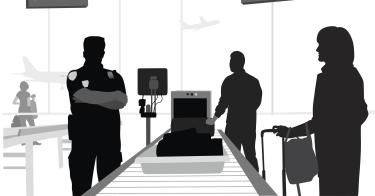Imagine that you own a small restaurant chain and you’ve hired a manager to ensure that the restaurants pass health inspection. After spending a fair sum of money, you decide to check up on how well he’s doing.
You visit each of your restaurants, unannounced, and are appalled at what you find. Almost none of them are up to snuff.
What would you do? You’d probably replace your manager.
Unfortunately, this hypothetical mirrors what’s going on at airports across the country. The Transportation Safety Administration has consistently failed tests of its security at airports. Several years ago, it failed 95 percent of the time. It’s not gotten appreciably better since then.
And the TSA’s problems extend beyond security failures. The agency has also struggled to manage its screening workforce efficiently. Two years ago, staffing problems left travelers stranded in long lines across the U.S.
Unlike our hypothetical restaurant owner, neither airports nor airline passengers can fire the TSA. Theoretically, the Screening Partnership Program (SPP) allows airports to opt out of TSA screening and use private screeners that follow TSA rules. In practice, however, this program is micromanaged by the TSA, and the agency makes it extremely difficult for airports to join the program.
One of President Trump’s campaign promises was to bring business know-how to government. Well, airport security could use a large dose of that. The TSA is a perfect candidate for a change.
There is no need for the TSA to recruit and manage a fully federalized aviation security workforce. Rather, the agency should be responsible only for setting and overseeing aviation security rules.
There is no inherent advantage in having government workers do the actual screening at airports. Most other industrialized countries have gone with private screeners — and for good reason. Private screening companies typically handle labor and union issues far more effectively than the government. The results are better staffing practices at airports that improve the customer experience. Better staffing practices also translate to lower costs and security that is at least as good as what the government provides.
Multiple studies bear this out. A study by the House Transportation Committee found that the San Francisco airport, an SPP participant, operated about 40 percent more efficiently than the Los Angeles airport, where TSA handles screening operations. Similarly, a study comparing the U.S. and Canada’s aviation security expenditures found that Canada spends about 40 percent less per capita and about 15 percent less per traveler.
Luckily for the U.S., moving to a more efficient system isn’t rocket science. There are several ways to get there.
Canada, for example, uses a public-private partnership. The government sets the security rules and regulations, while a government corporation known as CATSA manages equipment and customer service standards. CATSA also contracts with private screeners to handle screening at four regions across Canada. While the U.S. would need more regions, the U.S. could easily adapt the Canadian system.
Another option is even simpler. The U.S. already has the Screening Partnership Program. Just change it from an opt-in program to the normal way of handling airport security.
And, no, that wouldn’t mark a dangerous return to a pre-9/11 mindset. No one is saying that beefing up security regulations was a mistake. Back then, government regulations allowed knives on airplanes, and cockpit doors were not secure.
But the issue is how to best carry out these rules. Using private screeners would relieve TSA from managing a 43,000-person screening workforce — a task which it has done very poorly. TSA could then focus on oversight and ensuring that rules keep up with ever-changing security threats.
Focusing the agency on threats and oversight would enhance security, save money and leave travelers far happier.
And if a screening contractor fails, it can be held accountable and replaced.
You’d demand competent performance from someone working for you. Our leaders should demand no less from TSA.
This piece originally appeared in Washington Times


